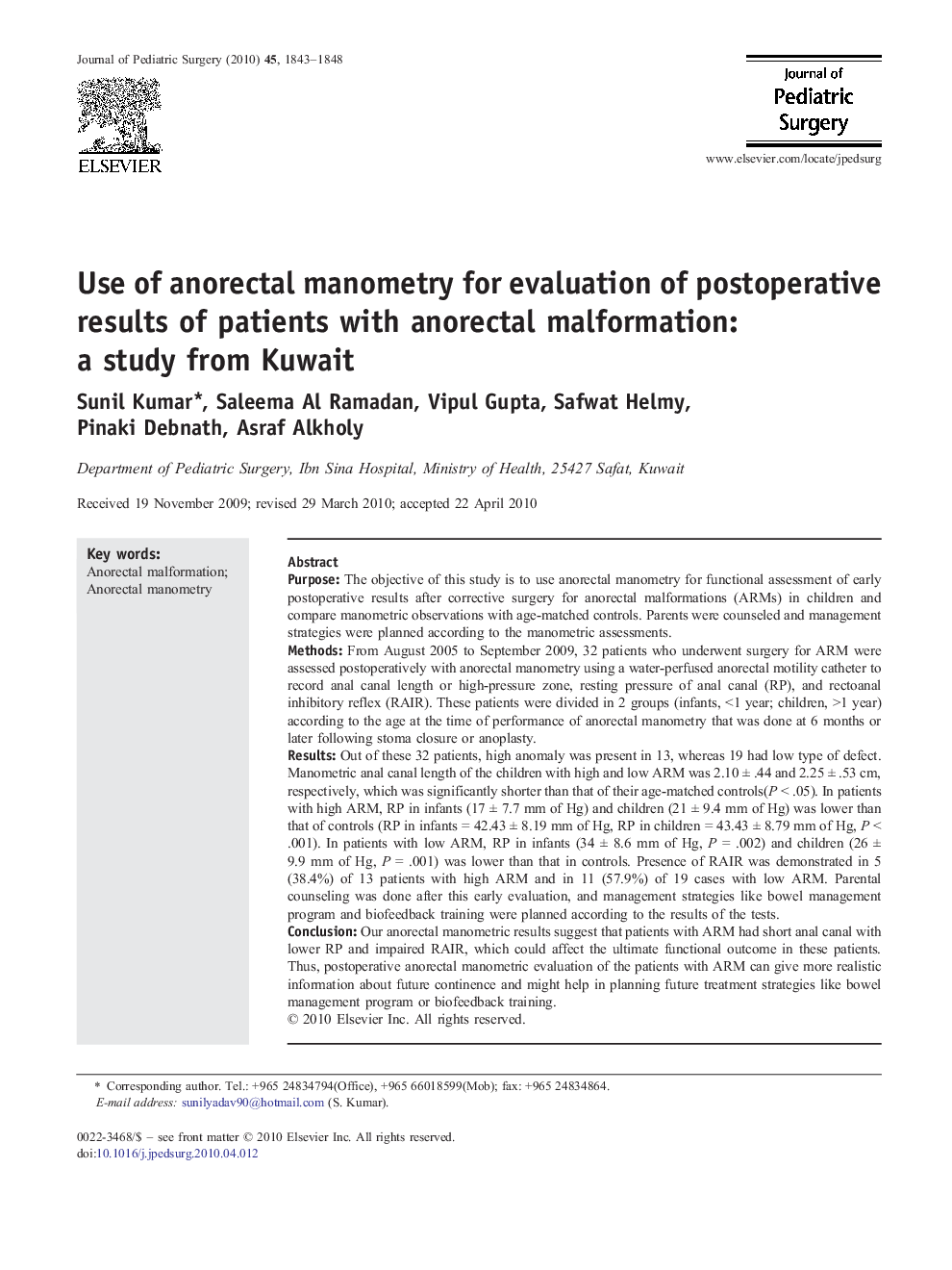| کد مقاله | کد نشریه | سال انتشار | مقاله انگلیسی | نسخه تمام متن |
|---|---|---|---|---|
| 4158375 | 1273810 | 2010 | 6 صفحه PDF | دانلود رایگان |

PurposeThe objective of this study is to use anorectal manometry for functional assessment of early postoperative results after corrective surgery for anorectal malformations (ARMs) in children and compare manometric observations with age-matched controls. Parents were counseled and management strategies were planned according to the manometric assessments.MethodsFrom August 2005 to September 2009, 32 patients who underwent surgery for ARM were assessed postoperatively with anorectal manometry using a water-perfused anorectal motility catheter to record anal canal length or high-pressure zone, resting pressure of anal canal (RP), and rectoanal inhibitory reflex (RAIR). These patients were divided in 2 groups (infants, <1 year; children, >1 year) according to the age at the time of performance of anorectal manometry that was done at 6 months or later following stoma closure or anoplasty.ResultsOut of these 32 patients, high anomaly was present in 13, whereas 19 had low type of defect. Manometric anal canal length of the children with high and low ARM was 2.10 ± .44 and 2.25 ± .53 cm, respectively, which was significantly shorter than that of their age-matched controls(P < .05). In patients with high ARM, RP in infants (17 ± 7.7 mm of Hg) and children (21 ± 9.4 mm of Hg) was lower than that of controls (RP in infants = 42.43 ± 8.19 mm of Hg, RP in children = 43.43 ± 8.79 mm of Hg, P < .001). In patients with low ARM, RP in infants (34 ± 8.6 mm of Hg, P = .002) and children (26 ± 9.9 mm of Hg, P = .001) was lower than that in controls. Presence of RAIR was demonstrated in 5 (38.4%) of 13 patients with high ARM and in 11 (57.9%) of 19 cases with low ARM. Parental counseling was done after this early evaluation, and management strategies like bowel management program and biofeedback training were planned according to the results of the tests.ConclusionOur anorectal manometric results suggest that patients with ARM had short anal canal with lower RP and impaired RAIR, which could affect the ultimate functional outcome in these patients. Thus, postoperative anorectal manometric evaluation of the patients with ARM can give more realistic information about future continence and might help in planning future treatment strategies like bowel management program or biofeedback training.
Journal: Journal of Pediatric Surgery - Volume 45, Issue 9, September 2010, Pages 1843–1848